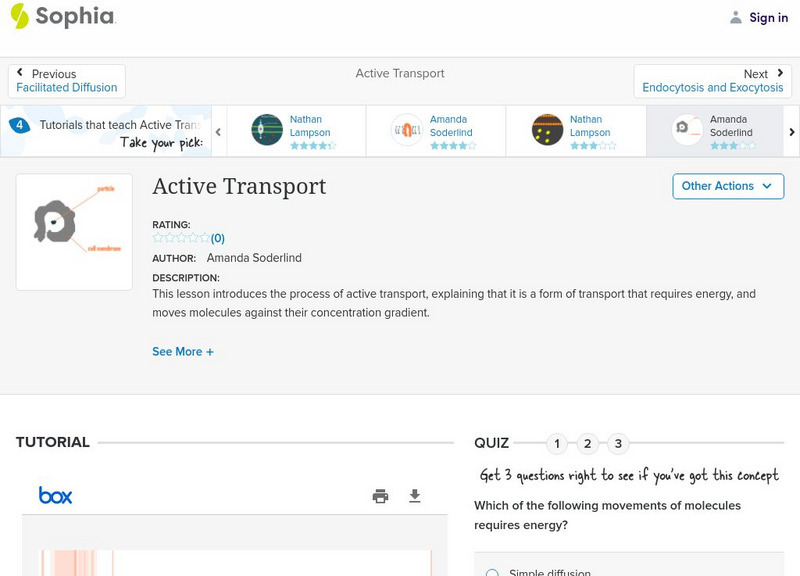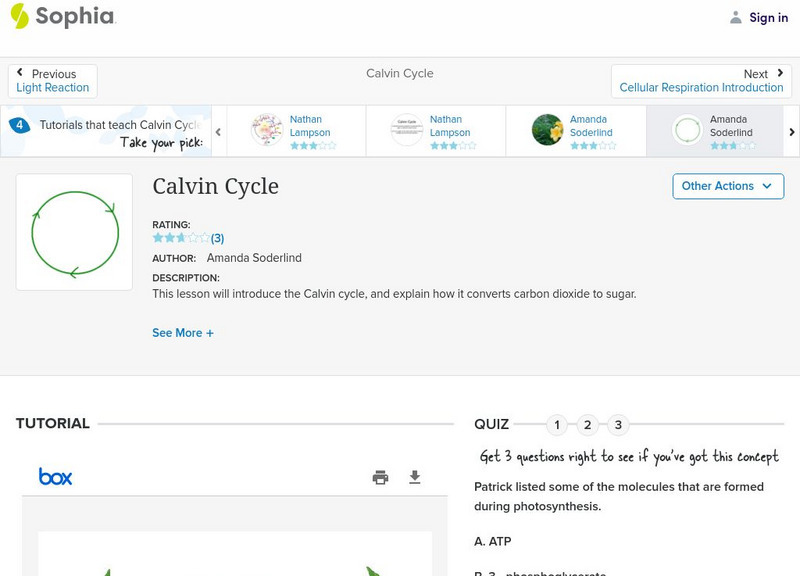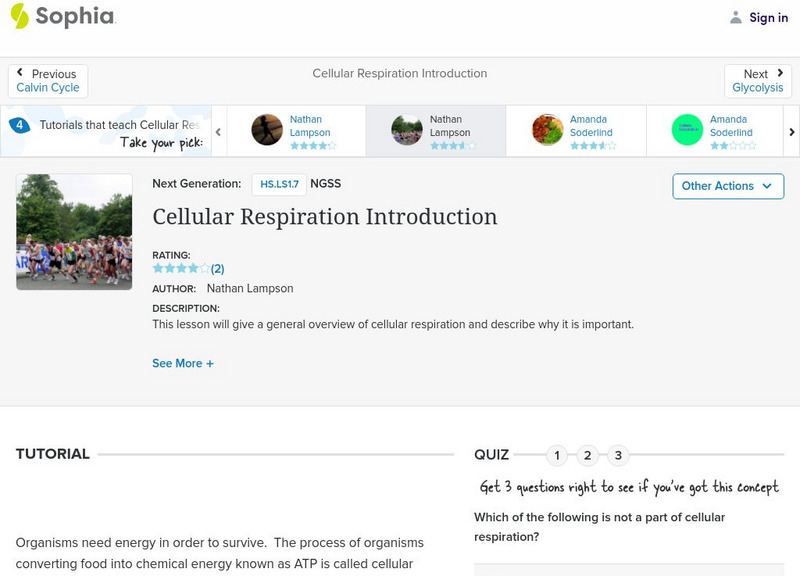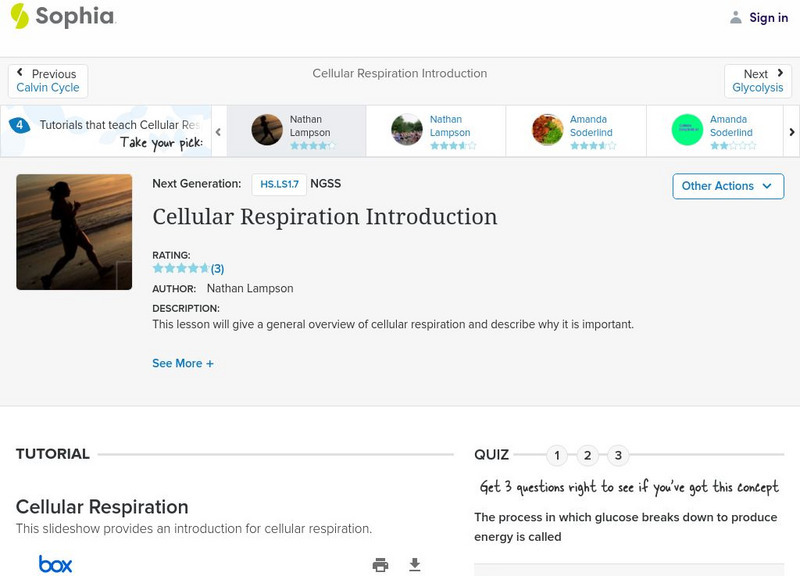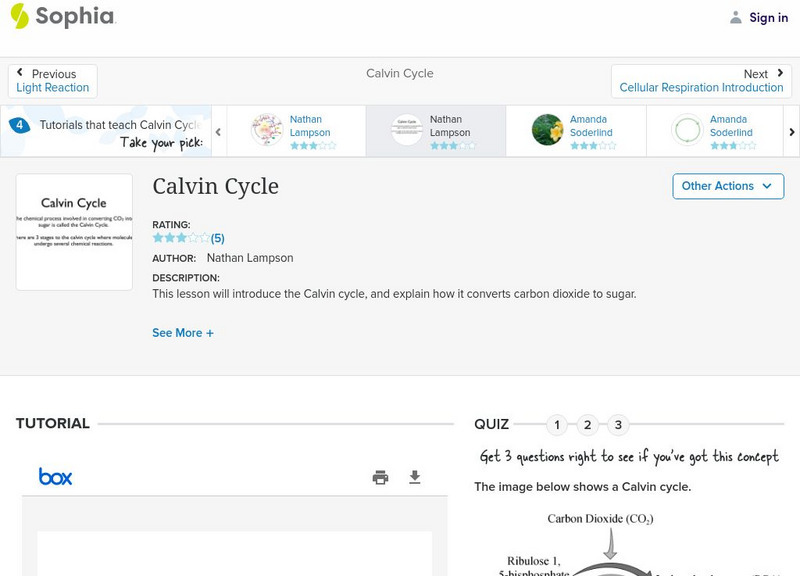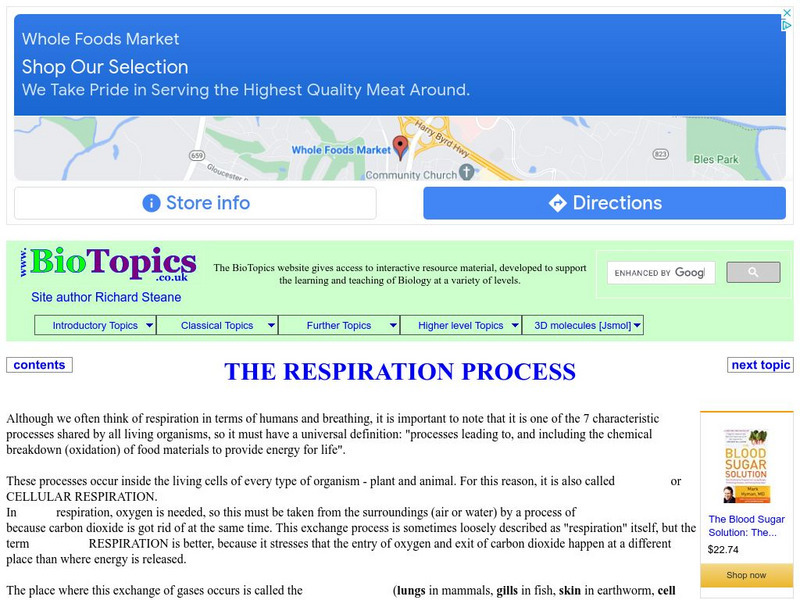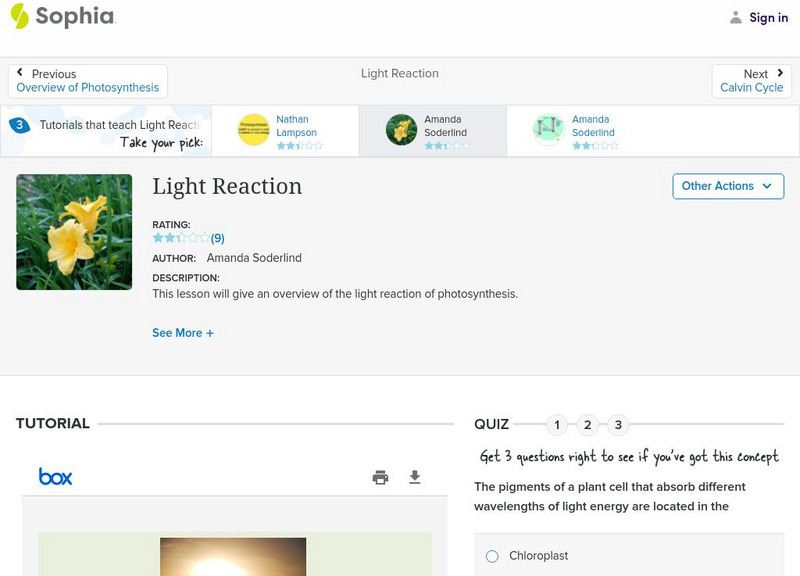Sophia Learning
Sophia: Active Transport: Lesson 2
This lesson introduces the process of active transport, explaining that it is a form of transport that requires energy, and moves molecules against their concentration gradient. It is 2 of 4 in the series titled "Active Transport."
Sophia Learning
Sophia: Active Transport: Lesson 4
This lesson introduces the process of active transport, explaining that it is a form of transport that requires energy, and moves molecules against their concentration gradient. It is 4 of 4 in the series titled "Active Transport."
Sophia Learning
Sophia: Active Transport: Lesson 1
This lesson introduces the process of active transport, explaining that it is a form of transport that requires energy, and moves molecules against their concentration gradient. It is 1 of 4 in the series titled "Active Transport."
Sophia Learning
Sophia: Calvin Cycle: Lesson 2
This lesson will introduce the Calvin cycle, and explain how it converts carbon dioxide to sugar. It is 2 of 4 in the series titled "Calvin Cycle."
Sophia Learning
Sophia: Calvin Cycle: Lesson 3
This lesson will introduce the Calvin cycle, and explain how it converts carbon dioxide to sugar. It is 3 of 4 in the series titled "Calvin Cycle."
Sophia Learning
Sophia: Cellular Respiration Introduction: Lesson 4
This lesson will give a general overview of cellular respiration and describe why it is important. It is 4 of 4 in the series titled "Cellular Respiration Introduction."
Sophia Learning
Sophia: Cellular Respiration Introduction: Lesson 1
This lesson will give a general overview of cellular respiration and describe why it is important. It is 1 of 4 in the series titled "Cellular Respiration Introduction."
Sophia Learning
Sophia: Calvin Cycle: Lesson 4
This lesson will introduce the Calvin cycle, and explain how it converts carbon dioxide to sugar. It is 4 of 4 in the series titled "Calvin Cycle."
Bio Topics
Bio Topics: The Respiration Process
This site provides a brief description of aerobic and anaerobic respiration. In addition, there are several learning exercises to reinforce and check understanding of the concepts presented.
Sophia Learning
Sophia: Light Reaction
A PowerPoint presentation reviewing the steps in the light reaction of photosynthesis. Understand how the light reaction uses water, carbon dioxide and light energy to produce ATP.
Quia
Quia: Aerobic Cellular Respiration Vocab
Assess your knowledge of aerobic cellular respiration by using these vocabulary flash cards. The front of the card lists a term and when you flip the card you get the answer. Good for quiz and test review.
ClassFlow
Class Flow: Cellular Respiration
[Free Registration/Login Required] This is a comprehensive, engaging overview of catabolic pathways that yield energy by oxidizing organic fuel. Students explore redox reactions, oxidation, reduction, and preview the stages of cellular...
Zero Bio
Zero Bio: Cellular Respiration Game
Make sure you know your facts before playing this game! Concepts of cellular respiration are the focal point of the questions. Get them correct and hit the target, or get them wrong and your arrow will flop.
BiologyWise
Biology Wise: Aerobic Respiration Steps
The steps in aerobic cellular respiration are explained in this resource. These include glycolysis, the Krebs cycle, and the electron transport chain.
BiologyWise
Biology Wise: Cellular Respiration in Plants
Explains what cellular respiration is, its function, and the three stages it goes through when it takes place in a cell.
BiologyWise
Biology Wise: What Is Atp
Describes the structure of ATP and how it is produced through the pathways of glycolysis, the Krebs cycle, and electron transport phosphorylation.
Other
Sports Central
Sports Central is an online sports source providing top stories, scores, analysis, and commentary in the world of sports.
BiologyWise
Biology Wise: Active Transport Process
Explains what happens during the active transport process where substances are moved across a cell membrane.
BiologyWise
Biology Wise: Aerobic and Anaerobic Respiration and Their Differences
The steps and the chemical equations in aerobic and anaerobic cellular respiration are described as well as the differences between them.
BiologyWise
Biology Wise: What Is Anaerobic Respiration?
Explains what anaerobic cellular respiration is and how it differs from aerobic respiration. Discusses what this looks like in muscle cells, what the steps are, and the formula for anaerobic respiration.
Curated OER
Bristol University: Molecule of the Month:atp
A great page for all around biochemistry and background information. Includes the molecular structure and most of the information relevant to its role in living cells.
Curated OER
Amp Image
A great page for all around biochemistry and background information. Includes the molecular structure and most of the information relevant to its role in living cells.
Curated OER
Adp Image
A great page for all around biochemistry and background information. Includes the molecular structure and most of the information relevant to its role in living cells.
Curated OER
Atp Image
A great page for all around biochemistry and background information. Includes the molecular structure and most of the information relevant to its role in living cells.




